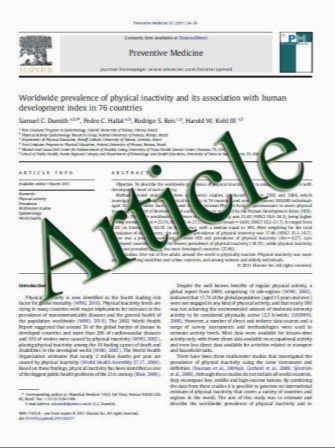Osteomalacia revisited
- نوع فایل : کتاب
- زبان : انگلیسی
- مؤلف : Laia Gifre & Pilar Peris & Ana Monegal & Maria Jesْs Martinez de Osaba & Luisa Alvarez & Nْria Guaٌabens
- چاپ و سال / کشور: 2011
Description
The aim of this study was to analyse the clinical manifestations and the most frequent causes of osteomalacia (OM) in a group of 28 patients diagnosed with this disorder during a 20-year period. OM was diagnosed by bone biopsy and/or by Bingham and Fitzpatrick criteria (two of the following: low calcium, low phosphate, elevated total alkaline phosphatase [total AP] or suggestive radiographs). Of these patients, 13 had vitamin D deficiency OM (VD-OM), 14 hypophosphatemic OM (HypoP-OM) and one had OM-associated hypophosphatasia. Deficient sun exposure and celiac disease were the most frequent etiologies of VD-OM, whereas most HypoP-OMwere hereditary forms. The main clinical symptoms were polyarthralgias (89%), frequently associated with fractures (75%). Fifty seven percent had densitometric criteria of osteoporosis. Patients with VD-OM showed significantly higher total AP and PTH serum values, but lower vitamin D, serum calcium, calciuria and bone mass than patients with HypoP-OM. Conversely, HypoP-OM patients had significantly lower serum phosphate and higher phosphaturia than patients with VD-OM. Briefly, high total AP, low serum calcium and low serum phosphate were observed in 85%, 65%and 15%, respectively, of patients with VD-OM, being observed in 64%, 14% and 100%, respectively, of HypoP-OM patients. Nearly 50% of these latter showed increased FGF23 levels. In conclusion, in this study, the frequencies of HypoP-OM and VD-OM were similar. The most frequent laboratory abnormalities were increased total AP and decreased serum phosphate. A urinary calcium loss of less than 50 mg/dl was highly discriminatory for VD-OM and a serum phosphate less than 2.3 mg/dl was also high discriminatory for HypoP-OM. Low densitometric values and fractures were frequent among these patients.
Clin Rheumatol (2011) 30:639–645 Received: 2 June 2010 / Revised: 15 September 2010 / Accepted: 28 September 2010 / Published online: 15 October 2010


